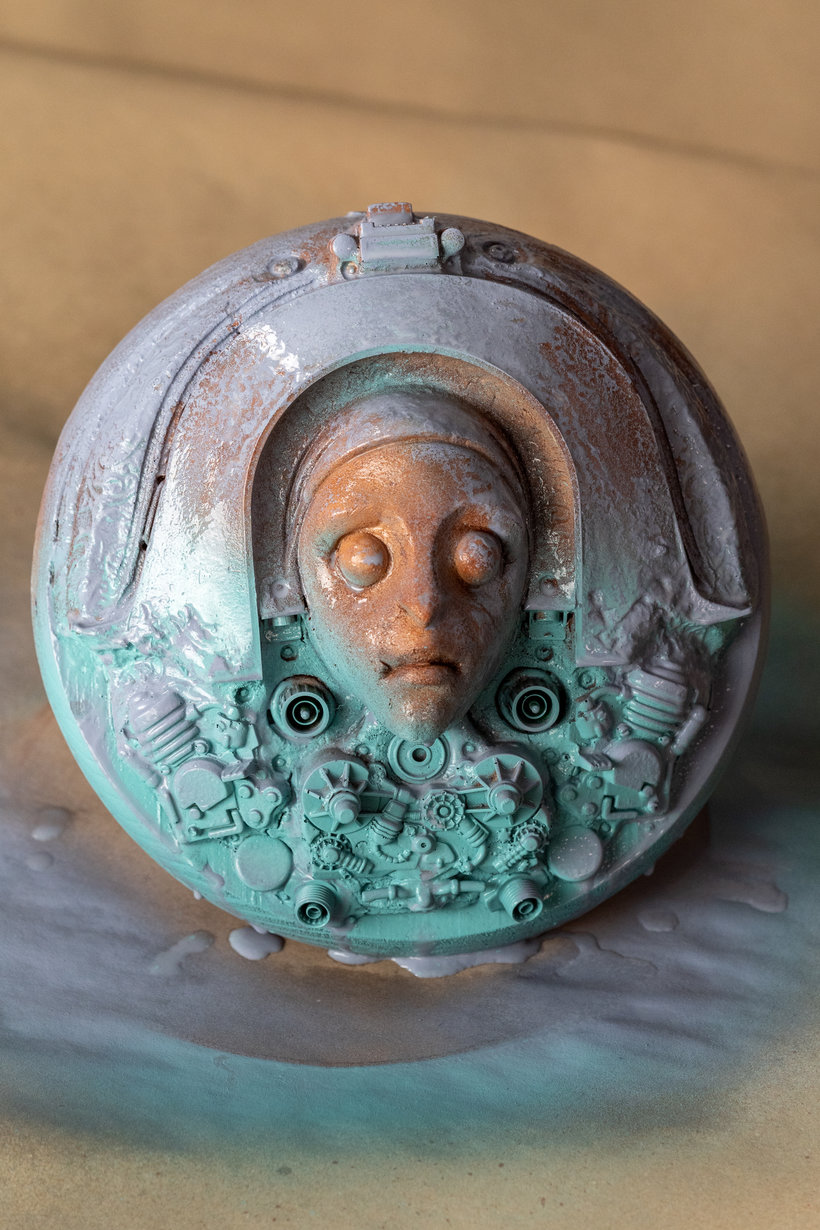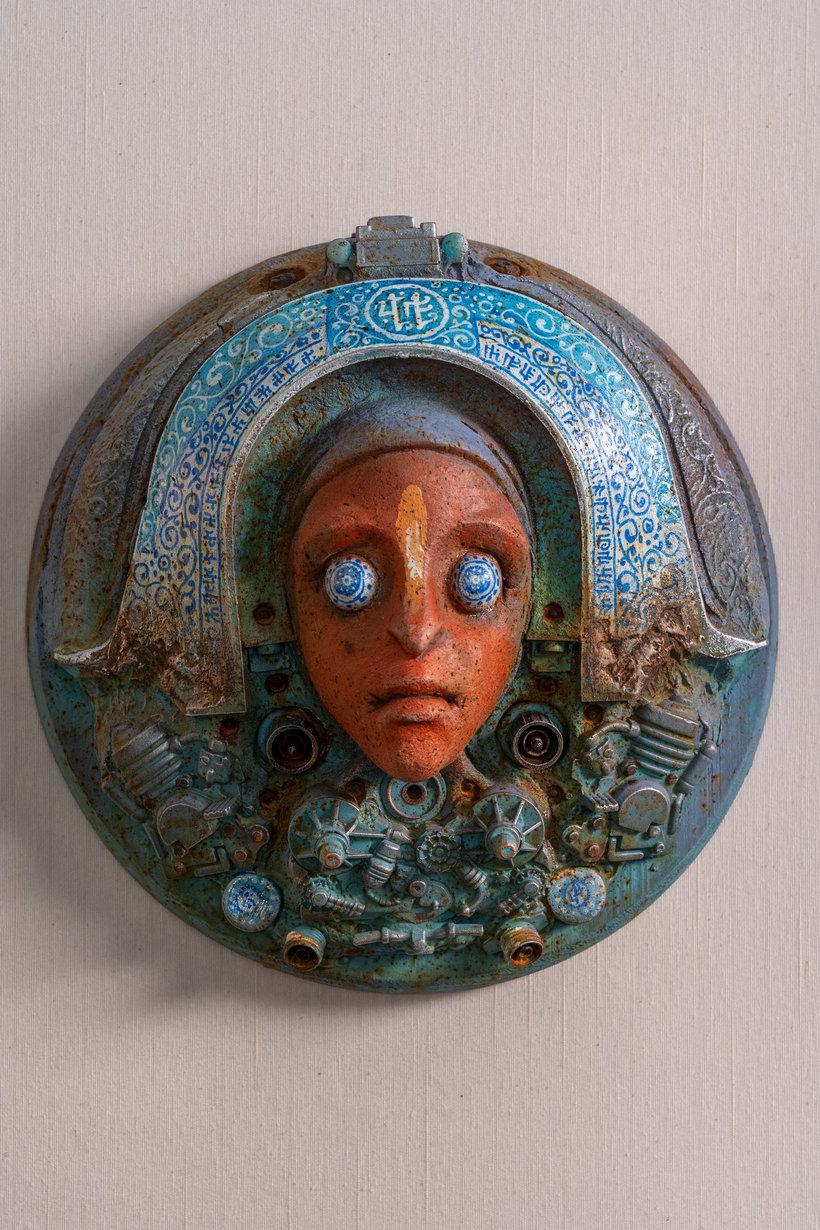Sculpture and Color: Polychrome Techniques
Course final project
A course by Tomas Barcelo , Sculptor
About the final project for: Sculpture and Color: Polychrome Techniques
Sculpture and Color: Polychrome Techniques
“We have reached the end of this course in which we have immersed ourselves in the world of polychromy. I hope you have enjoyed the journey and that you can apply these techniques in your course project and all those that come after it. Now we are going to review the key phases of the project so that you can share it with the Domestika community. I would like you to briefly explain what you have done in each one and accompany the explanation with one or more images. Primer and color base Prime the piece and give it a first coat of interesting color. You can play with the color of the primer and use the water mask to create vibrant effects right from the start. In many parts of the sculpture you will completely cover this step, but it is also possible that in other parts it will be partially covered or completely visible.




Partial transcription of the video
“Final project hello and thank you very much for having accompanied me until the end of this course. Color has always teamed up with form in ancient sculpture. It took me a lot of work, a long time to understand how these two artistic languages were related. And this is why I wanted to share with you in this course my learning about the polychromy of sculpture. As a final project I have taught you to imitate some materials into objects with volume. We also learned to combine these effects to create a sculpture richer in polychromy. To do this, the first step was to understand how to recreate...”
This transcript is automatically generated, so it may contain mistakes.
Course summary for: Sculpture and Color: Polychrome Techniques
-
Category
Craft -
Areas
Arts & Crafts, Decorative Painting, Fine Arts, Sculpture

Tomas Barcelo
A course by Tomas Barcelo
Tomàs Barceló is a traditional sculptor who uses clay and plaster, but who has dared to reinvent himself, adding new materials and new techniques and languages, such as assembling found objects. For Tomàs, this has been the perfect combination of his l...
- 100% positive reviews (75)
- 2,599 students
- 17 lessons (3h 51m)
- 23 additional resources (5 files)
- Online and at your own pace
- Available on the app
- Audio: Spanish, English
- Spanish · English · Portuguese · German · French · Italian · Polish · Dutch · Turkish
- Level: Beginner
- Unlimited access forever
Category
Areas


